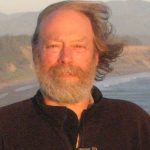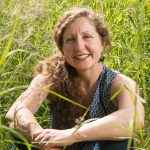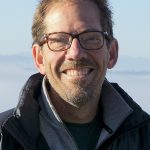Scientists call for protecting half the planet to provide an equitable future for all species and a safe climate
View at Nature Research Sustainability Community. A response to Schleicher et al. “One Billion People to be Directly Affected by Protecting Half.” Nature Sustainability (2019): 1-3.
We are in a planetary recession marked by biodiversity collapse, climatic upheavals, freshwater shortages, global toxification, and unprecedented human and nonhuman displacements (Ripple et al, 2017). The only positive outlook lies in deep solutions and new narratives. Protecting at least half the Earth, terrestrial and marine, offers such an outlook. Safeguarding nature on a vast scale is necessary both to halt the mass extinction underway and to prevent the huge unleashing of carbon that will result from further ecological degradation (Steffen et al., 2018). In addition to affording robust natural solutions to the ecological exigencies that are imperiling all complex life, the Half Earth (or Nature Needs Half) initiative charts a course toward a sustainable and equitable human coexistence alongside the millions of life forms with whom we share the planet (Noss et al., 2012; Wilson, 2016; Dinerstein et al., 2017; Kopnina 2016; Kopnina et al., 2018).
In implementing Half Earth, conservationists, scientists, and policy-makers should work in concert with indigenous people and local populations (Goodall, 2015). Such efforts are aimed at ensuring that, en route to preempting further ecological catastrophes and healing the relationship between humanity and Earth, wide-scale nature protection will not adversely affect people in proximity to these natural areas (Goodall, 2015; Naidoo et al., 2019). The level of protection proposed will also bar corporate ventures, such as mining, logging, and industrial agriculture, from profiteering at the ongoing expense of the natural world and local and indigenous people (Vettese, 2018).
It is thus disappointing that Judith Schleicher et al. (2019) undermine the spirited endeavors of Half Earth by recycling the cliché that peoples’ interests and the interests of the nonhuman world are perennially in conflict. The eco-catastrophes that we are witnessing display the deep untruth of this platitude, as humanity is now jeopardized by the consequences of unrestrained overreach in the ecosphere (Steffen et al., 2018). Ours is the moment to realize the ultimate falsehood of the “people versus nature” ostensible tradeoff and to recognize that the wellbeing—and malaise—of both are intertwined. Yet Schleicher et al., by tacitly raising the specter of fortress conservation, sabotage the needed transformation toward achieving the “win-win” alignment between humanity and the nonhuman world that Half Earth seeks to foster. Indeed, the subtext of their paper insinuates that the motives of conservationists are dubious.
Half Earth practitioners must work with communities to achieve ecological integrity and people’s wellbeing in tandem. To ensure that nonhuman and human worlds thrive together in the long term, and that people are not disadvantaged by large-scale nature protection, the Half Earth movement must be complemented by downscaling the human enterprise (Crist, 2019). This means degrowing the global economy, changing production and overconsumption patterns, and shifting to renewable energy sources (Rees, 2014). It also demands overhauling the financial system away from its debt-based mode of operation, which fuels consumerism and helps bankroll egregious levels of wealth. Additionally, to lower consumption and waste—in a world rapidly converging toward a middle-class standard of living—we must work internationally to stabilize and gradually reduce the global population (Pimentel et al., 2010). This goal is achievable by fast-tracking human-rights policies of family-planning services for all, education for girls and young women through at least secondary school, abolition of child marriage, and comprehensive sex education in every school (Crist et al., 2017). Shrinking the human enterprise also calls upon us to refrain from infrastructural expansion into protected or intact areas and, in some cases, to remove already-encroaching development upon these. These strategies can occur in urban areas through cradle-to-cradle designs, as well as on agricultural lands which can support more biodiversity, e.g., through regenerative approaches and setting aside wildlife habitat (McDonough and Braungart, 2002; Yigitcanlar et al., 2019).
Even in the midst of profound apprehension and grief, there is a cresting human awareness of what we stand to lose: the cosmic wealth of a living planet and the chance to inhabit it with grace (Rolston, 2012). Half Earth offers a global eco-social prospect that marries realism and vision. Schleicher et al. undermine this hope-filled course with the backsliding and killjoy insinuation of people versus nature. A throwback mindset is also acute in their blanket anthropocentrism, wherein considerations of justice and wellbeing apparently apply solely to humans; they fail to mention the rights of nonhumans to thrive or even to continue to exist (Chapron et al., 2019). Protecting nature is not meant to displace or disadvantage local communities, as Schleicher et al. imply, but to create sustainable coexistence. In this coexistence, ecological integrity—species diversity, thriving populations, and evolutionary potential—is of greater value than short-term human economic success.
The problem is not that Nature Needs Half, but that economic and population growth trends need to be addressed, for the sake of both human well-being and conservation. At a deeper level, we must move in the ethically inclusive direction of protecting the natural world not only because it is good for us, but also because it is good for all (Piccolo et al., 2018). Such inclusive worldviews are already emerging in the leading wave of both popular and academic cultures, leaving behind the human-centered presumption that pervades Schleicher et al.’s paper. The present-day watchwords spurring humanity toward a lively and equitable future—including intersectional justice, rights of nature, rewilding, and multispecies flourishing—reflect the ascending human consciousness of all-Earthling solidarity. Half Earth is an essential component of making that future a reality.
References
Chapron, G. et al. 2019. “A rights revolution for nature.” Science 363 (6434): 1392-1393.
Crist, E. et al. 2017. “The interaction of human population, food production, and biodiversity protection.” Science 356 (6335): 260-264.
Crist, E. 2019. Abundant Earth: Toward an Ecological Civilization. University of Chicago Press.
Dinerstein, E., et al. 2017. “An ecoregion-based approach to protecting half the terrestrial realm.” BioScience 67 (6): 534-545.
Goodall, J. 2015. Caring for people and valuing forests in Africa.” In Wuerthner, et al., eds. 2015. Protecting the Wild: Parks and Wilderness, the Foundation for Conservation. Washington D.C.: Island Press, pp. 21-26.
Kopnina, H. 2016. Half the earth for people (or more)? Addressing ethical questions in conservation. Biological Conservation, 203, pp.176-185.
Kopnina, H., et al. 2018. “The ‘future of conservation’ debate: Defending ecocentrism and the Nature Needs Half movement.” Biological Conservation 217: 140-148.
McDonough, W. and Braungart, M. 2002. Cradle to Cradle: Remaking the Way We Make Things. New York: North Point Press.
Naidoo, R., et al. 2019. Evaluating the impacts of protected areas on human well-being across the developing world. Science Advances, 5(4): eeav3006.
Noss, R.F., et al. 2012. Bolder thinking for conservation. Conservation Biology, 26:1-4.
Piccolo, J. et al. 2018. Why conservation biologists should re-embrace their ecocentric roots’. Conservation Biology, 32(4): 959-961.
Pimentel, D. et al. 2010. “Will Limited Land, Water, and Energy Control Human Population Numbers in the Future?” Human Ecology, 38 (5): 599-611.
Rees, W. 2014. “Avoiding Collapse: An Agenda for Sustainable Degrowth and Relocalizing the Economy.” Canadian Centre for Policy Alternatives. BC Office.
Ripple, W.J. et al. 2017. World scientists’ warning to humanity: a second notice. BioScience, 67(12):1026-1028.
Rolston, H. A New Environmental Ethics: The next millennium for life on earth. London: Routledge, 2012.
Steffen, W. et al. 2018. Trajectories of the Earth System in the Anthropocene. PNAS http://www.pnas.org/content/pnas/early/2018/07/31/1810141115.full.pdf
Wilson, E. O. 2016. Half Earth: Our Planet’s Fight for Life. WW Norton & Company.
Vettese, T. 2018. To freeze the Thames: Natural geo-engineering and biodiversity. New Left Review, 111: 63-86.
Yigitcanlar, T. et al. 2019. Towards post-anthropocentric cities: Reconceptualizing smart cities to evade urban ecocide. Journal of Urban Technology, 26 (2): 147-152.
Join the Cornerstone Network
Sign up with a monthly donation and become part of our Cornerstone Network. Network members recieve the messages posted here first, delivered directly to your inbox. Your ongoing support is the foundation of our work.

 Samantha Medlock is President of Climate Risk Advisors, helping communities and organizations advance equity, sustainability, and resilience. Her career began chasing floods as a local official in Texas Flash Flood Alley—a hands-on experience that still shapes her approach to climate and disaster risk management.
Samantha Medlock is President of Climate Risk Advisors, helping communities and organizations advance equity, sustainability, and resilience. Her career began chasing floods as a local official in Texas Flash Flood Alley—a hands-on experience that still shapes her approach to climate and disaster risk management.
 Arsum is the Senior Adaptation and Coastal Resilience Specialist for the National Wildlife Federation’s Southcentral Region. In this role, she advances climate adaptation efforts, with a focus on nature-based approaches to address the impacts of climate change and extreme events across the Gulf region. She has authored and co-authored numerous publications on climate impact assessments and adaptation solutions. Additionally, she regularly participates in state-based coastal resilience and hazard mitigation planning across the Gulf, collaborating with regional and local stakeholders.
Arsum is the Senior Adaptation and Coastal Resilience Specialist for the National Wildlife Federation’s Southcentral Region. In this role, she advances climate adaptation efforts, with a focus on nature-based approaches to address the impacts of climate change and extreme events across the Gulf region. She has authored and co-authored numerous publications on climate impact assessments and adaptation solutions. Additionally, she regularly participates in state-based coastal resilience and hazard mitigation planning across the Gulf, collaborating with regional and local stakeholders. Frank is the former President of the Reinsurance Association of America. Frank currently serves on the Advisory Board of the OECD’s International Network for the Financial Management of Large-Scale Disasters, the RAND Center on Catastrophic Risk Management and Compensation, and the University of Cincinnati’s Carl H. Lindner III Center for Insurance and Risk Management Advisory Board.
Frank is the former President of the Reinsurance Association of America. Frank currently serves on the Advisory Board of the OECD’s International Network for the Financial Management of Large-Scale Disasters, the RAND Center on Catastrophic Risk Management and Compensation, and the University of Cincinnati’s Carl H. Lindner III Center for Insurance and Risk Management Advisory Board. Jim is a multilingual world traveler. Based in Bavaria during the 1970s, Jim spent most of this period in India, Afghanistan and Nepal, where he founded and operated a charitable medical clinic serving Tibetan Refugees. He settled in Oregon in 1983 on a forested ranch in the Umpqua National Forest.
Jim is a multilingual world traveler. Based in Bavaria during the 1970s, Jim spent most of this period in India, Afghanistan and Nepal, where he founded and operated a charitable medical clinic serving Tibetan Refugees. He settled in Oregon in 1983 on a forested ranch in the Umpqua National Forest. Dr. Micah Hahn is an Associate Professor of Environmental Health in the Institute for Circumpolar Health Studies at the University of Alaska-Anchorage. She received her joint PhD in Epidemiology / Environment and Resources from the University of Wisconsin-Madison and her MPH in Global Environmental Health from Emory University. Subsequently, she was a postdoctoral fellow for the CDC Climate and Health Program, and in this position worked collaboratively with the CDC Division of Vector-borne Diseases and the National Center for Atmospheric Research. Her research focuses on understanding the health impacts of climate change and working with communities to develop locally-relevant adaptation and resilience-building strategies. Dr. Hahn is also on the Management Team of the Alaska Climate Adaptation Science Center.
Dr. Micah Hahn is an Associate Professor of Environmental Health in the Institute for Circumpolar Health Studies at the University of Alaska-Anchorage. She received her joint PhD in Epidemiology / Environment and Resources from the University of Wisconsin-Madison and her MPH in Global Environmental Health from Emory University. Subsequently, she was a postdoctoral fellow for the CDC Climate and Health Program, and in this position worked collaboratively with the CDC Division of Vector-borne Diseases and the National Center for Atmospheric Research. Her research focuses on understanding the health impacts of climate change and working with communities to develop locally-relevant adaptation and resilience-building strategies. Dr. Hahn is also on the Management Team of the Alaska Climate Adaptation Science Center. Michael is a former Founding Principal of Resilient Cities Catalyst, a global non-profit helping cities and their partners tackle their toughest challenges. He is currently the Executive Director of Climate Resilience Academy at the University of Miami.
Michael is a former Founding Principal of Resilient Cities Catalyst, a global non-profit helping cities and their partners tackle their toughest challenges. He is currently the Executive Director of Climate Resilience Academy at the University of Miami. Dr. Quintus Jett is a consultant, educator, and strategist for public causes. He has a doctorate in Organizations & Management from Stanford University, and a two-decade faculty career which spans schools, departments, and programs of business, engineering, liberal studies, divinity, and public and nonprofit management. Following Hurricane Katrina in 2005, Dr. Jett launched a volunteer project in New Orleans, which enlisted residents, students from over a dozen colleges and universities, and hundreds of others to field map the city’s Gentilly district, Lower Ninth Ward, and New Orleans East. Dr. Jett is an innovator in higher education, bridging the divide between academic research and the other priorities of the modern university, including student access and diversity, community engagement, and providing foundations for life-long learning in today’s rapidly changing world.
Dr. Quintus Jett is a consultant, educator, and strategist for public causes. He has a doctorate in Organizations & Management from Stanford University, and a two-decade faculty career which spans schools, departments, and programs of business, engineering, liberal studies, divinity, and public and nonprofit management. Following Hurricane Katrina in 2005, Dr. Jett launched a volunteer project in New Orleans, which enlisted residents, students from over a dozen colleges and universities, and hundreds of others to field map the city’s Gentilly district, Lower Ninth Ward, and New Orleans East. Dr. Jett is an innovator in higher education, bridging the divide between academic research and the other priorities of the modern university, including student access and diversity, community engagement, and providing foundations for life-long learning in today’s rapidly changing world. Scott is Monfort Professor of Atmospheric Science at Colorado State University. He has written about 100 publications in the peer-reviewed climate literature, is a former editor of the Journal of Climate, and served for five years as founding Science Chair of the North American Carbon Program.
Scott is Monfort Professor of Atmospheric Science at Colorado State University. He has written about 100 publications in the peer-reviewed climate literature, is a former editor of the Journal of Climate, and served for five years as founding Science Chair of the North American Carbon Program. Linda has many years of experience in disaster preparedness and resilience. She has been an elected official on the Linn County Iowa Board of Supervisors, Chair of the Metropolitan Planning Organization, the East Central Iowa Council of Governments, the statewide Mental Health Developmental Disability and the Linn County Board of Health. Langston is a former president of the National Association of Counties (2013-2014).
Linda has many years of experience in disaster preparedness and resilience. She has been an elected official on the Linn County Iowa Board of Supervisors, Chair of the Metropolitan Planning Organization, the East Central Iowa Council of Governments, the statewide Mental Health Developmental Disability and the Linn County Board of Health. Langston is a former president of the National Association of Counties (2013-2014). Ken works with families and organizations as a mediator, organizational consultant, trainer and facilitator. Along with his passion for helping people prepare for and reduce climate change, Ken also volunteers as a mediator through Mediation Works and is passionate about supporting youth through mentoring with Boys to Men of Southern Oregon.
Ken works with families and organizations as a mediator, organizational consultant, trainer and facilitator. Along with his passion for helping people prepare for and reduce climate change, Ken also volunteers as a mediator through Mediation Works and is passionate about supporting youth through mentoring with Boys to Men of Southern Oregon. Matthew is a retired high school teacher who was once honored as Oregon High School Social Studies Teacher of the Year. Before his teaching career he was in the restaurant business in Portland. He is also a lawyer who has been a member of the Oregon State Bar Association since 1980.
Matthew is a retired high school teacher who was once honored as Oregon High School Social Studies Teacher of the Year. Before his teaching career he was in the restaurant business in Portland. He is also a lawyer who has been a member of the Oregon State Bar Association since 1980. Andrea is the Resilience Policy Advisor for the North Carolina Office of Recovery and Resiliency. She works across state agencies and with local governments to increase the state’s resilience to the impacts of climate change.
Andrea is the Resilience Policy Advisor for the North Carolina Office of Recovery and Resiliency. She works across state agencies and with local governments to increase the state’s resilience to the impacts of climate change.